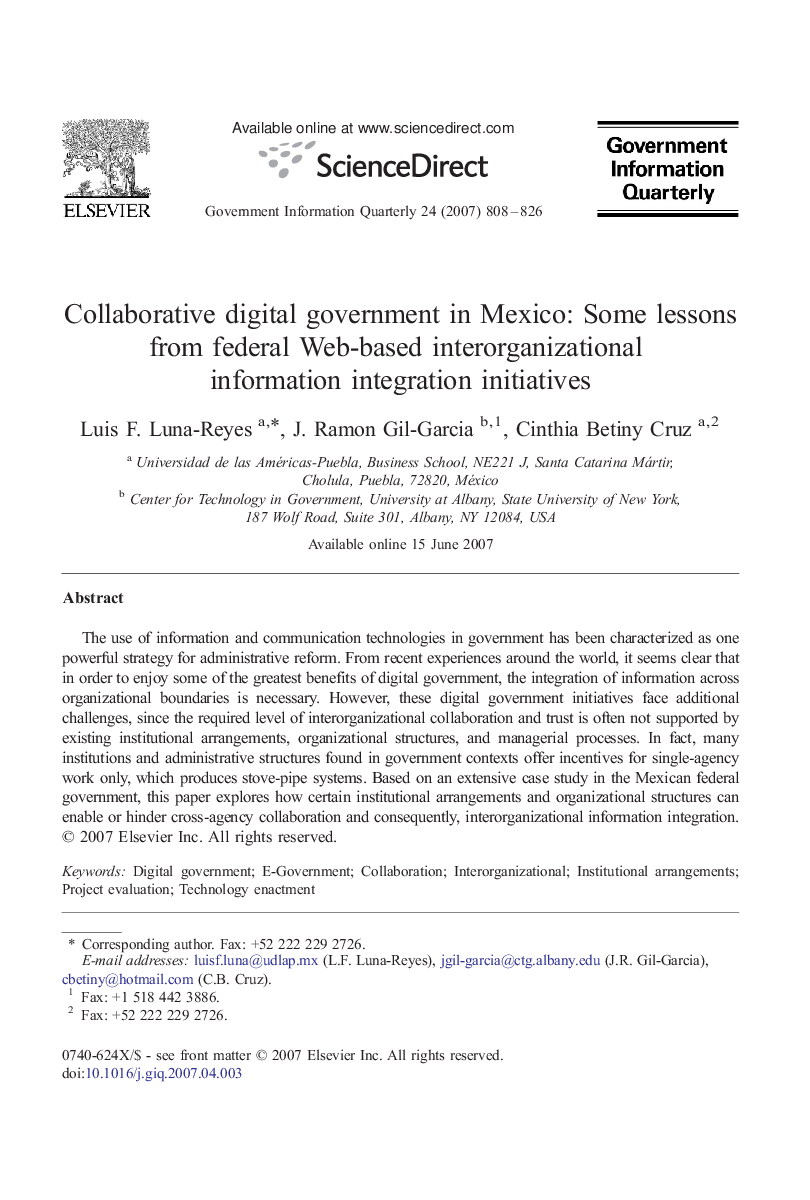| Article ID | Journal | Published Year | Pages | File Type |
|---|---|---|---|---|
| 1025125 | Government Information Quarterly | 2007 | 19 Pages |
The use of information and communication technologies in government has been characterized as one powerful strategy for administrative reform. From recent experiences around the world, it seems clear that in order to enjoy some of the greatest benefits of digital government, the integration of information across organizational boundaries is necessary. However, these digital government initiatives face additional challenges, since the required level of interorganizational collaboration and trust is often not supported by existing institutional arrangements, organizational structures, and managerial processes. In fact, many institutions and administrative structures found in government contexts offer incentives for single-agency work only, which produces stove-pipe systems. Based on an extensive case study in the Mexican federal government, this paper explores how certain institutional arrangements and organizational structures can enable or hinder cross-agency collaboration and consequently, interorganizational information integration.
